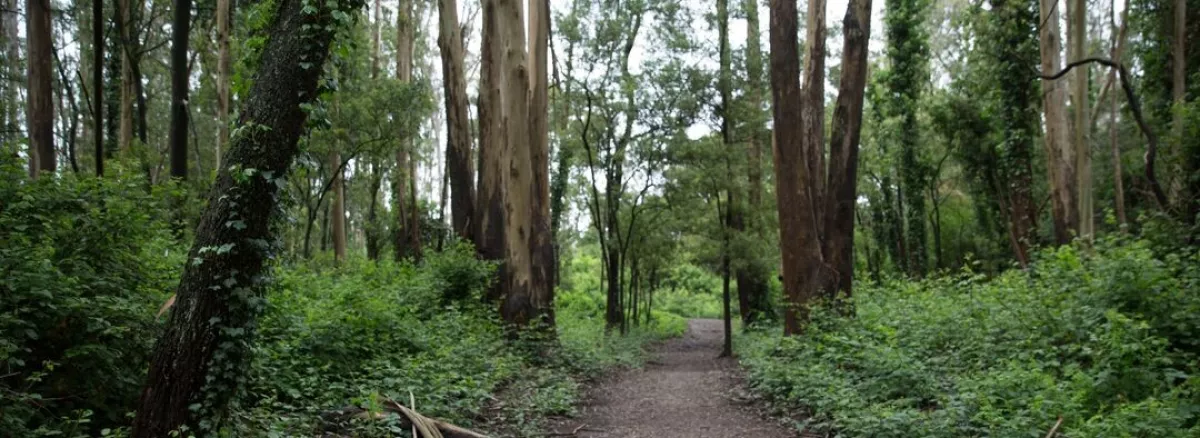Restorative Justice and Indigenous Peoples
While restorative justice is rooted in indigenous practices, we do not claim to speak on behalf of indigenous communities. The way that we practice and train facilitators in restorative justice should not be equated to understanding indigenous practices.
Interconnectedness
The practices and principles of restorative justice that we, and the institution of UCSF, are engaging with draw from diverse indigenous worldviews and epistemologies. One foundational principle that informs our work is ‘interconnectedness’. We recognized that the Ramaytush Ohlone people, and many other indigenous people across the globe, understood for millennia the interconnectedness of all things and continue to maintain harmony with nature. (Association of Ramaytush Oholone).
A Brief History of Restorative Justice and Circle Practice
The ethos and practice of restorative justice is deeply nested in the psyche and traditions of indigenous cultures across the globe (Umbreit et al., 2007). Indigenous people across the globe have led social justice movements that paved the way for restorative justice to evolve and become available in modern institutions (Umbreit et al., 2007). During the struggles to counter the mass incarceration of indigenous people, The Hollow Water First Nation on Lake Winnipeg and members of the Carcross-Tagish and Dahka T’lingit First Nations in Yukon played a critical role in demonstrating the power of Circles to non-Native peoples (The Origins of Circle. Living Justice Press). This practice continued to evolve through the development of Victim-Offender Reconciliation Programs (VORP) in Kitchener, Ontario in the late 1970s which was later adapted in Elkhart, Indiana, followed by other Prisoner and Community Together (PACT) program sites in the United States (Umbreit et al., 2007).
In the early 1990s there’s the first documented case of restorative justice and circle practice being applied in school systems in Australia (González, 2012). In October 2009, after successful pilots were led by the Oakland Unified School District, the San Francisco Unified School District Board adopted Resolution No. 96-23A1 to incorporate a restorative approach into the district education policy (González, 2012). Higher education institutions followed suit by adopting restorative justice as an alternative way to address student misconduct and discipline (Kara and MacAlister, 2010). This journey led to restorative justice being implemented in medical education and medical centers (Boatright et al., 2021).
To learn more on UCSF’s Land Acknowledgement and resources, and how to get involved, go to:
Office of Opportunity and Outreach
Association of Ramaytush Ohlone website:
ramaytush.org
Native-Land.ca website and app with map of Indigenous territories across the world:
native-land.ca
UCSF Land Acknowledgment Statement
Following consultation with members of the Ramaytush Ohlone community as well as campus Indigenous groups, UCSF provides the following Land Acknowledgment statement.
We would like to acknowledge the Ramaytush Ohlone people, who are the traditional custodians of this land. We pay our respects to the Ramaytush Ohlone elders, past, present, and future, who call this place, the land that UCSF sits upon, their home. We are proud to continue their tradition of coming together and growing as a community. We thank the Ramaytush Ohlone community for their stewardship and support, and we look forward to strengthening our ties as we continue our relationship of mutual respect and understanding.
Our Responsibilities to be in Right Relationship
While the UCSF land acknowledgment is an important first step in recognizing the Ramaytush Ohlone people’s relationship to the land that UCSF is situated on, there remains much work to be done to address the harm caused by the system of settler colonialism.
The practice and principles of Restorative Justice that we, and the institution of UCSF, are engaging with and benefiting from draw from indigenous cultures, practices, and worldviews. The practice can’t be removed from the historical and continued oppression and exploitation of indigenous people’s land and culture. Which is why we bring more visibility to these dynamics with hopes to further the institution's commitment to accountability and reparations. The process of accountability can begin with educating ourselves about these histories and systems.
As part of our commitment, the RJP team has made a charitable contribution to the Yunakin Land Tax which supports the Association of Ramaytush Ohlone.
Yunakin is the Ramaytush word for village. It is used here to convey our commonality as a community of people who live and work together in the ancestral homeland of the Ramaytush Ohlone peoples.
Work Cited
Boatright, D., Berg, D., & Genao, I. (2021). A roadmap for diversity in medicine during the age of COVID-19 and George Floyd. Journal of General Internal Medicine, 36(4), 1089–1091. https://doi.org/10.1007/s11606-020-06430-9
González, T. (2012). Keeping kids in schools: Restorative justice, punitive discipline, and the school to prison pipeline. Journal of Law & Education, 41(2), 281–335. Retrieved from https://www.proquest.com/docview/1008167526
Kara, F., & MacAlister, D. (2010). Responding to academic dishonesty in universities: A restorative justice approach. Contemporary Justice Review, 13(4), 443–453. https://doi.org/10.1080/10282580.2010.517981
Living Justice Press. The Origins of Circles. https://livingjusticepress.org/origins-of-circles/.
Umbreit, M. S., Coates, R. B., & Vos, B. (2007). Restorative justice dialogue: A multi‐dimensional, evidence‐based practice theory. Contemporary Justice Review, 10(1), 23–41. https://doi.org/10.1080/10282580601157521

